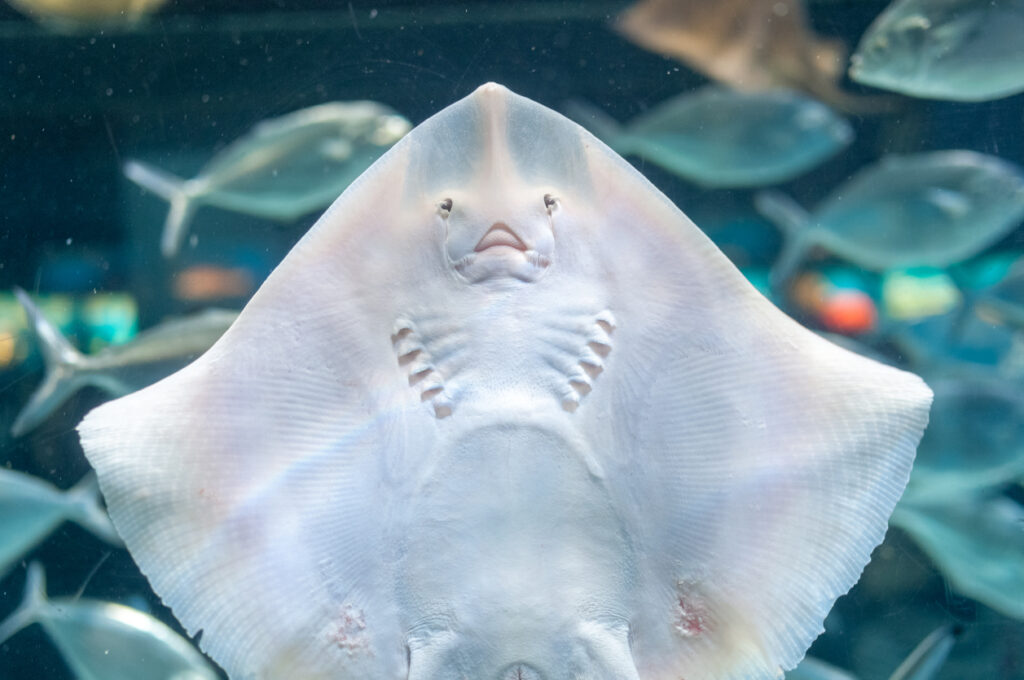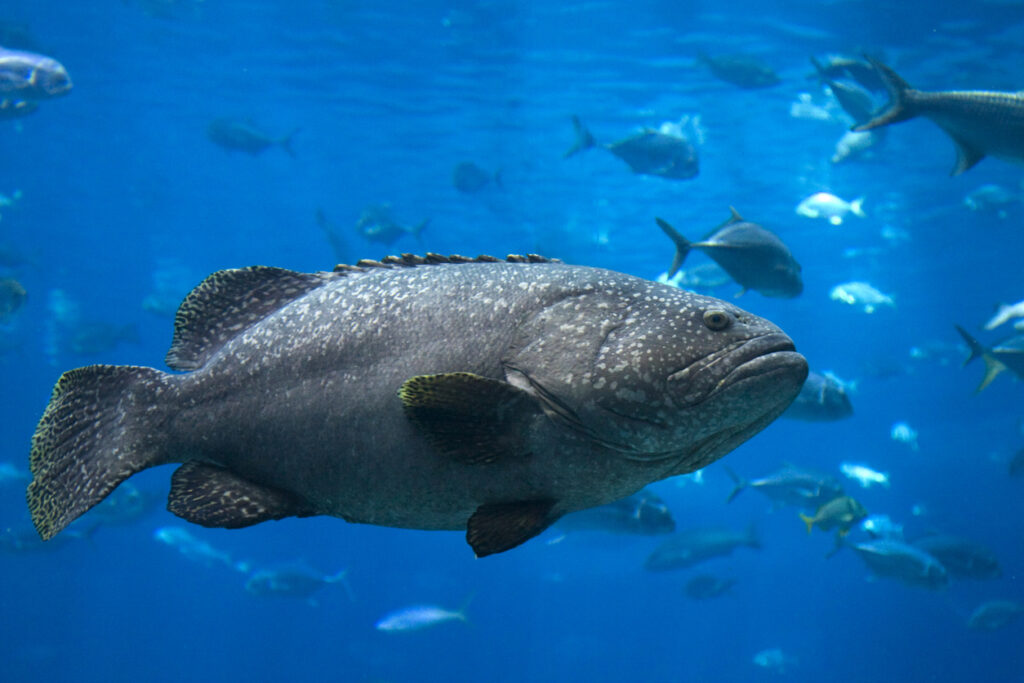You might think that you would recognise any number of sea creatures based on their appearance, but here at Bristol Aquarium we like to keep things interesting. What if you couldn’t see the whole animal – could you identify them from a close-up? Let’s put it to the test!
Guess the sea creature from a close-up image
So, do you think you could recognise a fish by its tailfin? Could you tell what animal a spiky arm belongs to? In our fun quiz, we’ve put together some close-up images so that you can try to guess who it belongs to! What’s more, you can come and see these animals for yourself in all their glory, right here at Bristol Aquarium.
Quiz highlights
So, how did you do? No matter your score, here we can help you learn a little more about some of these animals and their relatives, including what makes them so fascinating.
Stingrays
Stingrays can be found amongst temperate and tropical waters throughout the world – they even call the UK coast home too! The common stingray (Dasyatis pastinaca) typically don’t come as close as the shoreline, but it has a venomous barb on the end of its tail to defend itself if necessary.
When you see a stingray for yourself, you might think it’s smiling because of its upturned mouth. This is actually just how stingrays look all the time, so don’t be fooled! Come and see our very own common stingray in our Rocky Shores exhibit.

Mississippi map turtle
While the turtle you saw in the quiz might be a loggerhead turtle, here at Bristol Aquarium we’re home to a Mississippi map turtle (Graptemys pseudogeographica kohni). This is a bit of a misnomer, as in the UK this species would actually be referred to as a terrapin. However, the UK doesn’t have any native species of terrapin and they are classed as an invasive species since pet keepers have been known to release them into the wild.
It gets its name from the Mississippi river, as that’s where it’s typically found, as well as the lines and markings on its shell that look like the contour lines of a map. They have a very curious behaviour known as chin tickling, where the male vibrates his claws on the female’s face to impress her! Come and see if you can spot them at our Amazing Amazon exhibit.
Giant groupers
The giant grouper (Epinephelus lanceolatus) is the largest bony fish found amongst coral reefs, weighing over 300kg! They can be recognised by its fan-like tailfin and rounded pectoral fins.
Interestingly, giant groupers are protogynous hermaphrodites. This means they are all females, before maturing and becoming male. The giant grouper is also known as the mottled-brown sea bass, and is the biggest in the sea bass family. You can eye up this fascinating creature at our Coral Seas exhibit.

Banded hound shark
While you saw a leopard shark in the quiz above, which is a type of hound shark, here at the aquarium we’re home to a slightly different species. Part of the same family, the banded hound shark (Triakis scyllium) is commonly found around the Pacific Ocean, specifically off the coasts of Japan, China, Korea and south Russia.
They have very distinctive black rings around its body that fade with age, and they tend to stay close to the ocean floor.
Anemone
Sea anemones are incredibly fascinating, and there are more than 1,000 different species! They come in almost every colour and size imaginable.
They have colourful tentacles that can sting, although they are mostly used to stun and capture their prey – just try not to stand on them! Most anemones live in coral reefs, living close to the sea floor. Here at Bristol Aquarium you’ll see dahlia, strawberry and plumose anemones in our Learning Lab!
So, next time you visit us, let’s see how many different species you can identify! Book your tickets online today.
